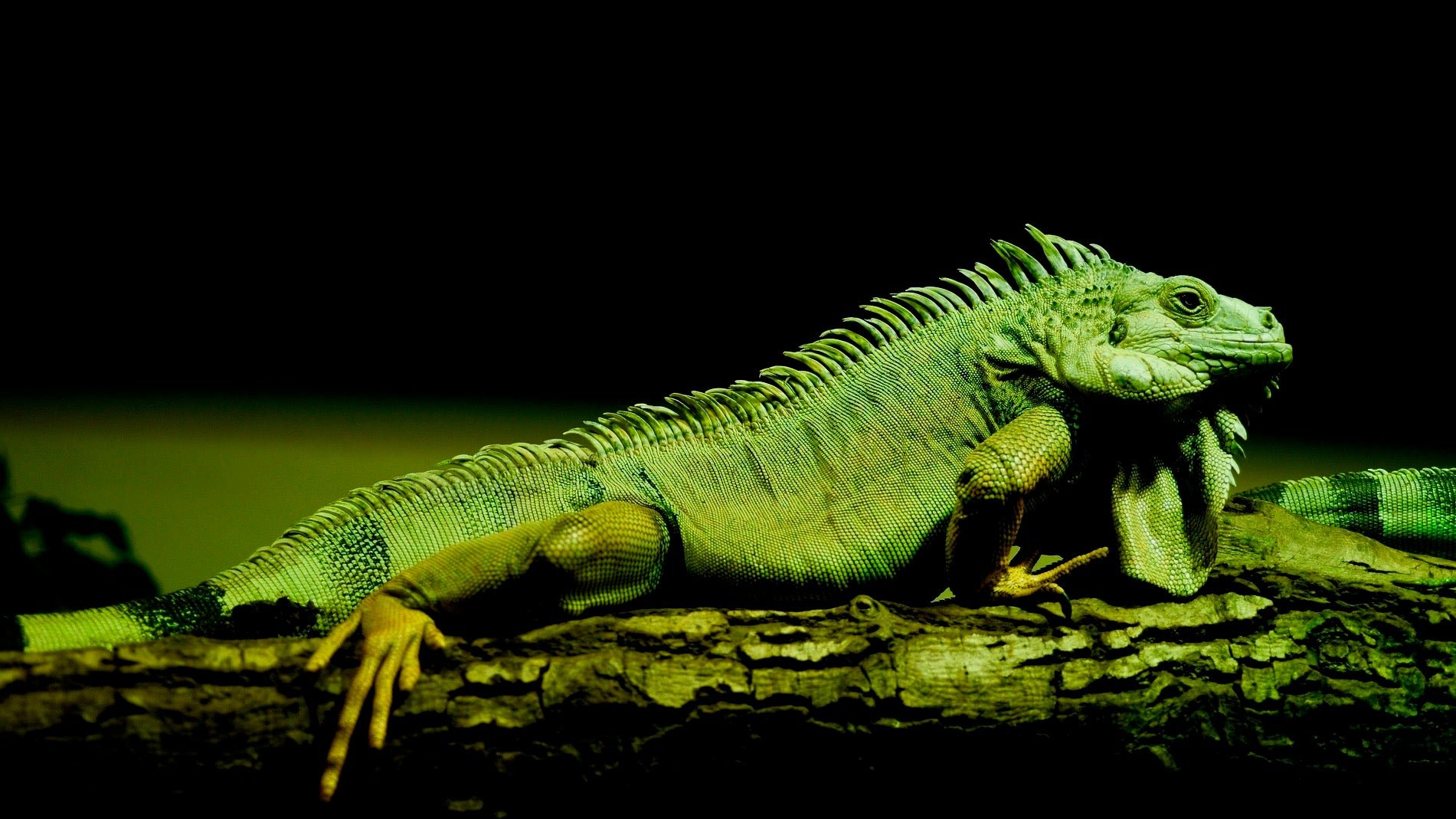Floridians are free to kill all green iguanas
Green iguanas are charming creatures. They have a row of spikes down their back, which makes them look punk rock, like 5-foot-long lizards sporting mohawks. They come with a built-in throat fan, called a dewlap, to help regulate body temperature. They can swim in fresh or saltwater and survive on land. Also, they have great taste: They subsist on a diet of shoots, leaves, blossoms, and fruit, including jasmine, orchids, and roses.


Green iguanas are charming creatures. They have a row of spikes down their back, which makes them look punk rock, like 5-foot-long lizards sporting mohawks. They come with a built-in throat fan, called a dewlap, to help regulate body temperature. They can swim in fresh or saltwater and survive on land. Also, they have great taste: They subsist on a diet of shoots, leaves, blossoms, and fruit, including jasmine, orchids, and roses.
Gardeners tend not to be charmed by the green iguanas for that reason. In Florida, where Iguana iguana is an invasive species, the Fish and Wildlife Commission (FWC) has declared open season on the creatures.
The FWC recently updated the language on its website “to clarify options for removing iguanas,” representative Carol Lyn Parrish tells Quartz. Among the options on the site is to deter iguanas by “humanely harassing” them, which involves spraying them with water or hanging wind chimes. But property owners are also free to humanely kill the iguanas, or trap them and bring them in to a veterinarian or humane society for euthanasia. It is illegal to poison the creatures.
“Iguanas, like all nonnative, invasive species, are not protected in Florida except by anti-cruelty law. They can be captured and killed on private property at any time with landowner permission,” Parrish states, citing FWC public information. “The FWC encourages the removal of iguanas and other invasive species from the wild,” she says, adding that the “FWC has consistently advised homeowners that iguanas can be removed from private property.”
In other words, the iguana problem is not new. Their native range extends from Central America to the tropical parts of South America and some eastern Caribbean islands, but Floridians have been dealing with the invasive species since the 1960s, when they were first seen in the Miami region. Since, they have spread throughout Southeastern Florida and can be seen munching on the beautiful blooms in the carefully manicured gardens of Palm Beach mansions. They tend not to survive in northern Florida counties, where it’s colder.
According to a recent report in the Washington Post, however, hotter temperatures due to climate change have caused the iguana population to explode. No one knows just how many green iguanas are roving around chomping on pricey blooms, but Joseph Wasilewski, who has studied green iguanas for 40 years as part of the University of Florida’s “Croc Docs” science team, told the publication that “climate change certainly has something to do with it. It’s warming things up and allowing them to go further north.”
Indeed, green iguana sightings have risen dramatically based on data from the FWC. In 2007, there were five sightings reported. By 2017, the number rose to 224. Just one year later, in 2018, there were more than 2,700 sightings reported.
Global warming isn’t the only way humans have aided the iguana’s invasion. The FWC notes on its website that Southern Florida’s extensive man-made canals “serve as ideal dispersal corridors to further allow iguanas to colonize new areas.”
These colonizers damage plants and leave droppings everywhere—on docks, moored boats, seawalls, porches, decks, pool platforms, and inside swimming pools. They also consume nickerbean, which is a host plant of the endangered Miami Blue butterfly. This means that, like another famous invasive species in the state, the python, the presence of iguanas threatens the natural habitat. Green iguanas can also transmit salmonella to humans through contact with water or surfaces contaminated by their feces.
The commission is encouraging Floridians to “remove” green iguanas right now. But Parrish told Quartz that no one is obligated to get rid of an intruder.